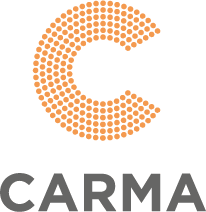A Quiet Revolution: Women in PR 2016 Annual Survey
A quiet revolution has been taking place at Women in PR. When the current Committee was formed in January 2015, we set an objective at our first meeting to broaden and diversify our membership.
The results of the first Women in PR annual survey last year were what we anticipated, particularly for an organisation embarking on a period of significant change. Most importantly, the 2015 results provided us with our first demographic profile of our members and a good benchmark from which to measure the effectiveness of the changes we have been introducing.
The results of the 2016 annual survey are in and we are delighted that we have met our target to broaden and diversify our membership.
At the start of 2015, Women in PR was heavily weighted towards those working in agency so we wanted to broaden our appeal to include those working in-house as well as in not-for-profit and public sector organisations. Nicola Green, Director of Communications & Reputation at O2 and Ali Jeremy, Director of Communications at the NSPCC both joined the Committee.
The 2016 annual survey has seen the number of in-house members more than double from 14 per cent in 2015 to 32 per cent in 2016; and the number of public sector members has also increased from nine per cent in 2015 to 14 per cent in 2016. While in-house membership has increased, agency membership has decreased from 54 per cent in 2015 to 41 per cent in 2016.
Flexible working
Interestingly, the number of self-employed and freelance members has decreased from 31 per cent in 2015 to 23 per cent in 2016. However, we have seen the number of members working part-time increase from 17 per cent in 2015 to 30 per cent in 2016. One of the reasons for this could be employers offering more flexible working, including the opportunity to work part-time, meaning fewer women working in PR feel the need to become self-employed in order to work flexibly.
Rise in ethnicity
One of the findings of the 2016 annual survey we are most pleased with is the increase in the ethnic diversity of Women in PR’s membership. In 2016 we’ve seen a net decrease in the number of members identifying themselves as White by 11 per cent. The most significant increase in BAME members has come from those identifying themselves as Asian British Indian who have increased by seven per cent in 2016. Other increases have come from those identifying themselves as Black British African (one per cent), other Mixed (one per cent) and any other ethnic background (one per cent). Those identifying themselves as Black British Caribbean has fallen by two per cent. For an industry that is dominated by the white, middle class, we are pleased that we have taken our first, small step in broadening the appeal of Women in PR and increasing the ethnic diversity of our membership.
Age is not a number
Now onto the thorny issue of age. We are proud of the fact that the Women in PR Committee ranges in age from c. 30 years old to 55 years old. We span a generation and we reflect the profile of mid-career and senior women operating in our industry in their 30s, 40s, 50s and beyond. Age should not be a number. We have members who have reached the board of their agency or set up their own business by 30 years old through to some of the most senior women in our industry operating as CEOs or running successful portfolio careers as NEDs. Over the past year, we have broadened the appeal of women in PR and our membership better reflects the broad age demographic of our industry.
Role and salaries
The 2016 annual survey reveals that eight per cent of members are a Director of Communications and 20 per cent are a Head of working in in-house roles. On the agency side, 24 per cent of members are a managing director or CEO, five per cent are a senior director and three per cent are partners.
In terms of salary, what do women working in PR in the UK earn? A significant 17 per cent of members are earning more than £100K per annum, with nine per cent earning £100K-£150K and eight per cent earning more than £150K. The majority of members (30 per cent) earn between £50K-£75K and nine per cent earn £75K-£100K.
The role of Women in PR
Finally, we asked our members what they wanted Women in PR to stand for and who the organisation should represent. More than three quarters (78 per cent) of members think Women in PR should support senior women and mid-career women; while 39 per cent think Women in PR should support mid-career women; and 36 per cent think Women in PR should exclusively provide a network for senior women.
The Committee of Women in PR will continue to provide a forum for the industry’s most senior women to network and exchange ideas. However, the Committee is also committed to supporting the female pipeline and those mid-career women who are most vulnerable to dropping out of their careers. This is why we are the official partner of the PR Week Mentoring programme run in conjunction with PR Week.
Our mission at Women in PR is “Inspiring women to reach their full potential.” We plan to continue our quiet revolution to broaden and diversify our membership, advocate for an increase in female representation in the boardroom, close the gender pay gap and support mid-career women – all while delivering great events which our members want to attend!




